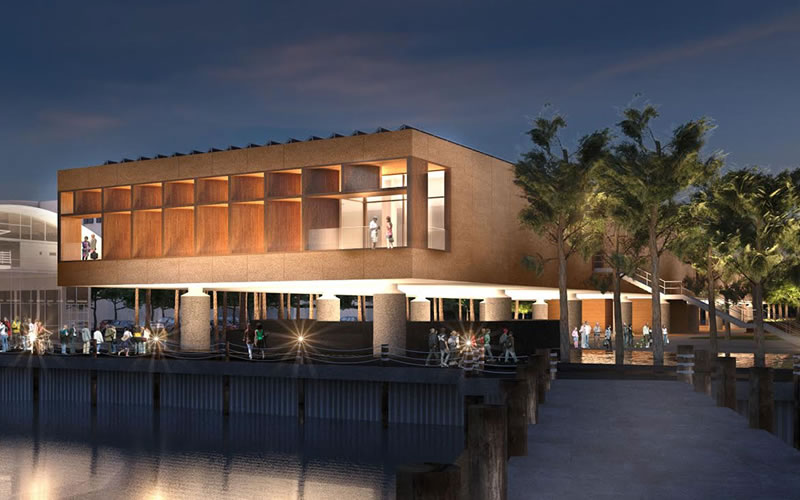By Andy Brack, editor and publisher | Construction is expected to begin this summer for the $100 million International African American Museum on the Charleston site where an estimated 100,000 West Africans disembarked into slavery.
“This is an unusual opportunity for the city … to create something of enormous value to our country,” former Charleston Mayor Joe Riley told members of the Rotary Club of Charleston last week “We American’s don’t understand African American history. It’s important for the nation to be well-grounded in itself, its people, their contributions and their history.”
Charleston was an epicenter of the international slave trade at its peak from 1783 to 1808. Almost half of Africans forced to come to the United States disembarked in Charleston at Gadsden’s Wharf, historian Henry Louis Gates says on a promotional video about the museum.
The new 40.000-square-foot museum will be built along the Cooper River where the wharf was located, now a long, narrow field between the Dockside residential high-rise and the Charleston Maritime Center. Construction should take two years, which means the opening of the museum is expected to be in the middle part of 2020.
“This is America’s history – we are one elemental part of our national story,” said Michael B. Moore, CEO and president of the museum. Moore reflects on Gadsden’s Wharf.
Organizers have almost reached their $75 million fund-raising goal to build the museum. About two thirds of funding will come from state and local government sources — $25 million from the state of South Carolina and $12.5 million each from the city and county of Charleston. Thanks to foundations, institutions, corporate donors and individuals, the museum has raised an additional $19 million, leaving about $6 million left to go. More announcements on big gifts are expected in the coming weeks.
Perhaps the most exciting part of the museum will be its Center for Family History, a place where families of African descent can try to piece together their family histories. It’s particularly hard, Moore said, because the U.S. Census didn’t include names of slaves prior to 1870.
Also planned for the museum are a Social Justice Action Center, which will be an outreach platform between the museum and local community. The museum also will have multiple themed exhibitions, a 3,000-square-foot room for changing exhibits and an educational curriculum.
“This is going to be a very big project for Charleston,” Moore said, later adding that the museum would captivate people across the nation to visit – which will boost tourism and pump dollars into local pockets.
- To learn more about the museum and its plans, visit the International African Museum online.
- Have a comment? Send to: editor@charlestoncurrents.com




 We Can Do Better, South Carolina!
We Can Do Better, South Carolina!
























